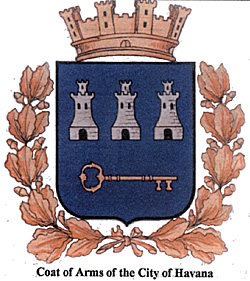 The reasons for Spain's decision in January of 1762 to become a late participant in the Seven Years War have been the subject of much debate and speculation. Clairvoyance was not needed to realize that by then France was beaten. Britannia had triumphed not only at sea but on land, having already seized Senegal and Goree in Africa, Louisbourg, Quebec, Montreal and the island of Guadeloupe in America, Pondicherry, France's last colony in India, and even Belleisle right off the coast of France. Up to then Fernando VI of Spain had wisely pursued a policy of peace and strict neutrality. However, his death in August of 1759 brought his younger brother, Carlos III, to the throne in January of 1760.
The reasons for Spain's decision in January of 1762 to become a late participant in the Seven Years War have been the subject of much debate and speculation. Clairvoyance was not needed to realize that by then France was beaten. Britannia had triumphed not only at sea but on land, having already seized Senegal and Goree in Africa, Louisbourg, Quebec, Montreal and the island of Guadeloupe in America, Pondicherry, France's last colony in India, and even Belleisle right off the coast of France. Up to then Fernando VI of Spain had wisely pursued a policy of peace and strict neutrality. However, his death in August of 1759 brought his younger brother, Carlos III, to the throne in January of 1760.
Although he was an able and enlightened monarch, Carlos III's judgment in this matter was skewed by a personal animosity against England whose government he described as one that "...acknowledges no law but the enlargement of its nation by land, and a universal despotism over the oceans...". This, combined with a genuine family affection towards his Bourbon cousin, Louis XV of France, led Carlos III to bind Spain's fate to that of France by signing the Third Family Compact on August 15, 1761. But, to an even greater extent, what moved him to cast his lot with France was the fear that the impending British success and naval hegemony would so upset the balance of power that the Spanish overseas colonies would be left at the mercy of Royal Navy.
Luis de Velasco The Siege of Havana, 1762
- Introduction and Background
War Between Spain and England
Plan of Defense and Offense
The Siege
Day of Reckoning
Illustration: Spanish Artillerists 1740 (slow: 76K)
Losses at El Morro: Day by Day 6/22-7/30 1762
Plan of El Morro (slow: 123K)
Contemporary Map of Havana (slow: 142K)
Back to Seven Years War Asso. Journal Vol. XII No. 2 Table of Contents
Back to Seven Years War Asso. Journal List of Issues
Back to Master Magazine List
© Copyright 2001 by James J. Mitchell
This article appears in MagWeb (Magazine Web) on the Internet World Wide Web.
Other military history articles and gaming articles are available at http://www.magweb.com